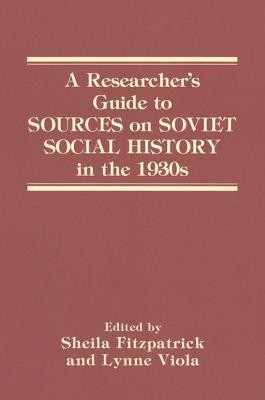
- We will send in 10–14 business days.
- Author: Sheila Fitzpatrick
- Publisher: Routledge
- Year: 2006
- Pages: 304
- ISBN-10: 1563240785
- ISBN-13: 9781563240782
- Format: 15.4 x 23.2 x 2.4 cm, softcover
- Language: English
- SAVE -10% with code: EXTRA
A Researcher's Guide to Sources on Soviet Social History in the 1930s (e-book) (used book) | bookbook.eu
Reviews
Description
The Stalin era has been less accessible to researchers than either the preceding decade or the postwar era. The basic problem is that during the Stalin years censorship restricted the collection and dissemination of information (and introduced bias and distortion into the statistics that were published), while in the post-Stalin years access to archives and libraries remained tightly controlled. Thus it is not surprising that one of the main manifestations of glasnost has been the effort to open up records of the 1930s. In this volume Western and Soviet specialists detail the untapped potential of sources on this period of Soviet social history and also the hidden traps that abound. The full range of sources is covered, from memoirs to official documents, from city directories to computerized data bases.
EXTRA 10 % discount with code: EXTRA
The promotion ends in 18d.21:43:44
The discount code is valid when purchasing from 10 €. Discounts do not stack.
- Author: Sheila Fitzpatrick
- Publisher: Routledge
- Year: 2006
- Pages: 304
- ISBN-10: 1563240785
- ISBN-13: 9781563240782
- Format: 15.4 x 23.2 x 2.4 cm, softcover
- Language: English English
The Stalin era has been less accessible to researchers than either the preceding decade or the postwar era. The basic problem is that during the Stalin years censorship restricted the collection and dissemination of information (and introduced bias and distortion into the statistics that were published), while in the post-Stalin years access to archives and libraries remained tightly controlled. Thus it is not surprising that one of the main manifestations of glasnost has been the effort to open up records of the 1930s. In this volume Western and Soviet specialists detail the untapped potential of sources on this period of Soviet social history and also the hidden traps that abound. The full range of sources is covered, from memoirs to official documents, from city directories to computerized data bases.


Reviews